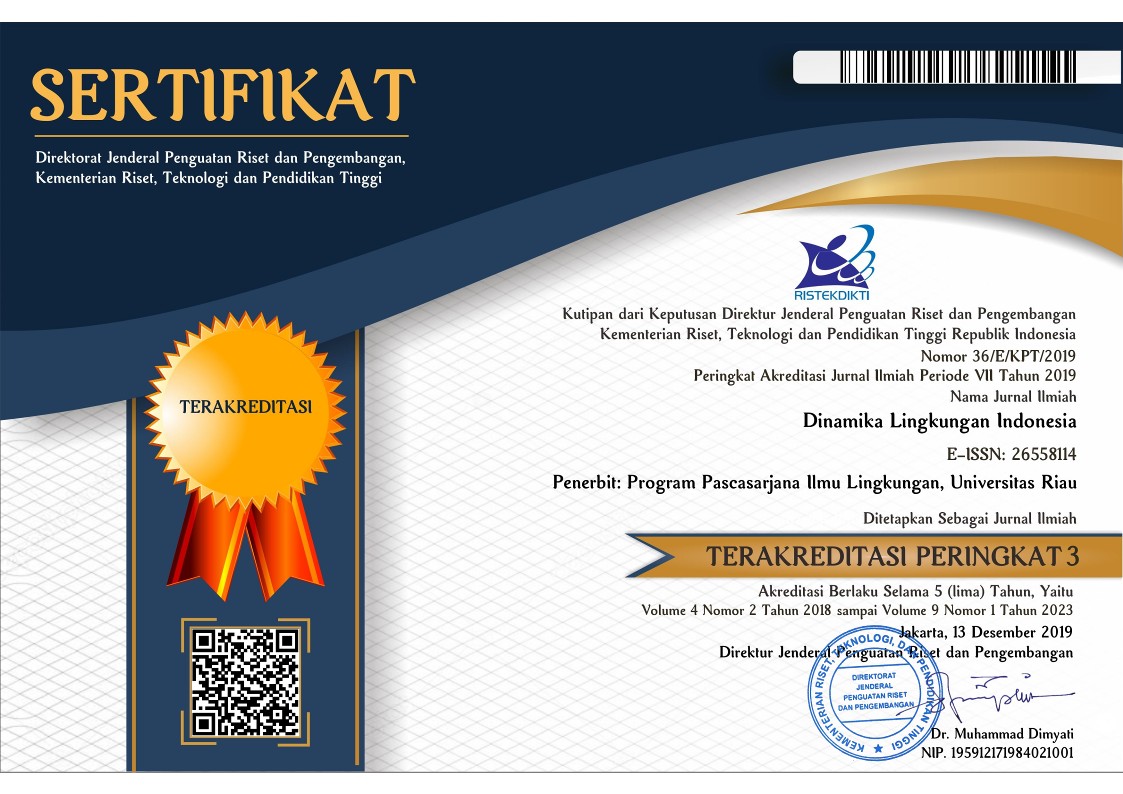Pemanfaatan Limbah Perkebunan Kelapa Sawit Sebagai Sumber Energi Terbarukan
Abstract
Indonesia is the world's largest palm oil producer with a land area of 14.3 million as of 2019. With this area, it will produce biomass in the form of replanted stems, midribs, empty palm oil bunches (TKKS), shells and fruit fibers. Biomass waste, including palm oil solid waste, has the potential to be used as raw material for renewable energy or bioenergy. This study aims to utilize palm oil plantation waste into bio oil and bio briquettes. The raw materials used in this study were empty oil palm fruit bunches (TKKS) and palm oil shell waste. Bio oil is made by the pyrolysis process. This research produces pyrolysis products, namely bio oil as a substitute for diesel fuel from EFB waste and from shells to produce bio briquettes. Found in pyrolysis products, namely bio-oil, aromatic compounds, aliphatic hydrocarbon compounds, acid compounds and hydrocarbon compounds. Hydrocarbon compounds are compounds that exist in fuel oil. In OPEFB bio oil, 19 types of hydrocarbon compounds were found. Meanwhile, bio briquettes from oil palm shells produce a calorific value of > 5000 which has met the Indonesian national standard (SNI) 01-6235 in 2000. Meanwhile, the water content value meets the Indonesian National Standard, which is a maximum of 15%.
Keywords
Full Text:
PDFReferences
Anindhita, F., Sugiyono, A., Ode, L., & Abdul, M. (2018). Outlook energi indonesia 2018: Energi berkelanjutan untuk transportasi darat. ISBN 978-602-1328-05-7. PPIPE, BPPT. Indonesia.
Abnisa, F., Arami-Niya, A., Wan Daud WMA., Sahu J. N., & Noor, I. M. (2013). Utilization of oil palm tree residues to produce bio-oil and bio-char via pyrolysis. Energy Convers. Manag. 76 1073–1082. https://doi.org/10.1016/j.enconman.2013.08.038.
[BSI] Badan Standar Indonesia. (2000). Briket arang kayu (SNI 01-6235-2000). Jakarta.
Bardalay, M., & Mahanta, D. K. (2015). A Review of Physical Properties of Biomass Pyrolysis Oil. International Journal of Renewable Energy Research 5(1):1-10. https://doi.org/10.20508/ijrer.v5i1.1989.g6495.
Basu, P. (2013). Biomass Gasification, Pyrolysis and Torrefaction. Practical Design and Theory diedit oleh second Edition. India: Elsevier.
[BPS] Badan Pusat Statistik. (2021). Statistik Kelapa Sawit Indonesia. Jakarta (ID).
Bridgwater, A. V. (2012). Review of fast pyrolysis of biomass and product upgrading. Biomass and Bioenergy.38:68–94. https://doi.org/10.1016/j.biombioe.2011.01.048.
Caprariis, B. D., Filippis, P., Petrullo, A., & Scarsella, M. (2017). Hydrothermal liquefaction of biomass: Influence of temperature and biomass composition on the bio-oil production. Fuel. 208:618–625. doi: https://doi.org/10.1016/j.fuel.2017.07.054.
Chang, S. H. (2014). An overview of empty fruit bunch from oil palm as feedstock bio oil production. Biomass and Energy. 62 : 174 - 181. https://doi.org/10.1016/j.biombioe.2014.01.002.
Chiaramonti, D., Matteo, P., Buffi., Rizzo, M., & Maria, A. (2017). Review and experimental study on pyrolysis and hydrothermal liquefaction of microalgae for Biofuel Production. Applied Energy. 185: 963-972. https://doi.org/10.1016/j.apenergy.2015.12.001.
Hambali, E. (2010). Peran teknologi proses dalam pengembangan agroindustri industri hilir kelapa sawit. Orasi ilmiah guru besar IPB (ID).
Hendra, D. (2011). Pemanfataan enceng gondok (Eichornia crassipes) untuk bahan baku briket sebagai bahan bakar alternatif. Jurnal Penelitian Hasil Hutan. 29(2), 189–210. https://doi.org/10.20886/jphh.2011.29.2.189-210.
Jiang, H., Deng, S., Chen, J., Zhang, M., Li, S., Shao, Y., Yang, J., & Li, J. (2017). Effect of hydrothermal pretreatment on product distribution and characteristics of oil produced by the pyrolysis of Huadian oil shale. Energy Convers. Manag. 143 505–512. https://doi.org/10.1016/j.enconman.2017.04.037.
Wibowo, S., Pari, G., & Eviyanti, L. (2011). Karakterisasi bio-oil tandan kosong kelapa sawit dengan penambahan katalis ni/nza menggunakan metode free fall pyrolysis. Jurnal peneltian hasil hutan 35(2): 83-100. https://doi.org/10.20886/jphh.2017.35.2.83-100
Xiu, S., & Shahbazi, A. (2012). Bio-oil production and upgrading research: A review. Renew. Sustain. Energy Rev. 16(7) 4406–4414. https://doi.org/10.1016/j.rser.2012.04.028.
Yanti, R. N., Hambali, E., Pari, G., & Suryani, A. (2017). The characteristics of palm oil plantation solid biomass wastes as raw material for bio oil. IOP Conf. Ser.: Earth Environ. Sci. 141 012038.
Yang, L., Nazari, L., Yuan, Z., Corscadden, K., Xu, C. & He, Q. S. (2016). Hydrothermal liquefaction of spent coffee grounds in water medium for bio-oil production. Biomass and Bioenergy. 86 191–198. https://doi.org/10.1016/j.biombioe.2016.02.005.
DOI: http://dx.doi.org/10.31258/dli.10.1.p.7-11
Refbacks
- There are currently no refbacks.

This work is licensed under a Creative Commons Attribution 4.0 International License.





